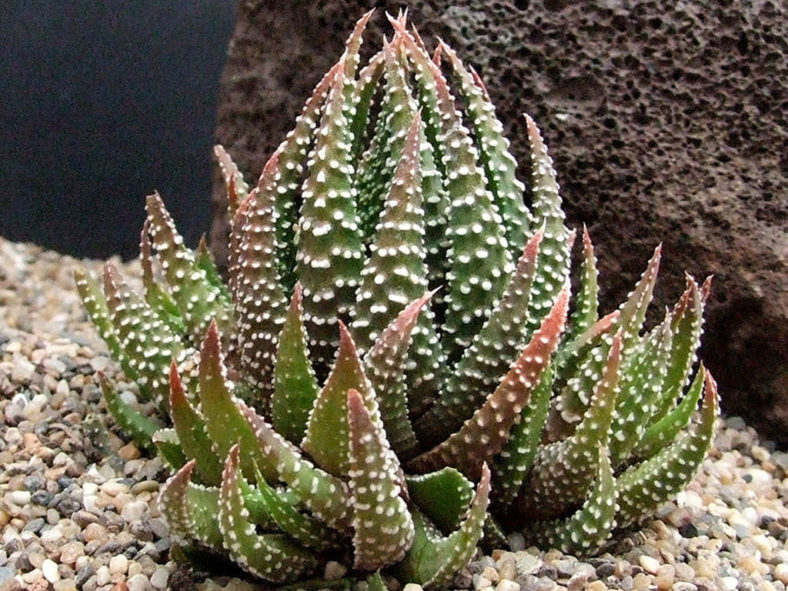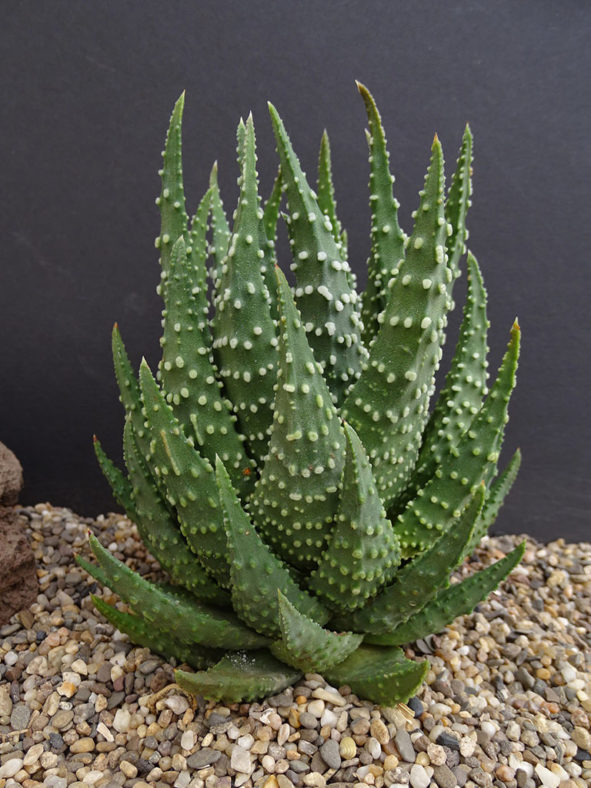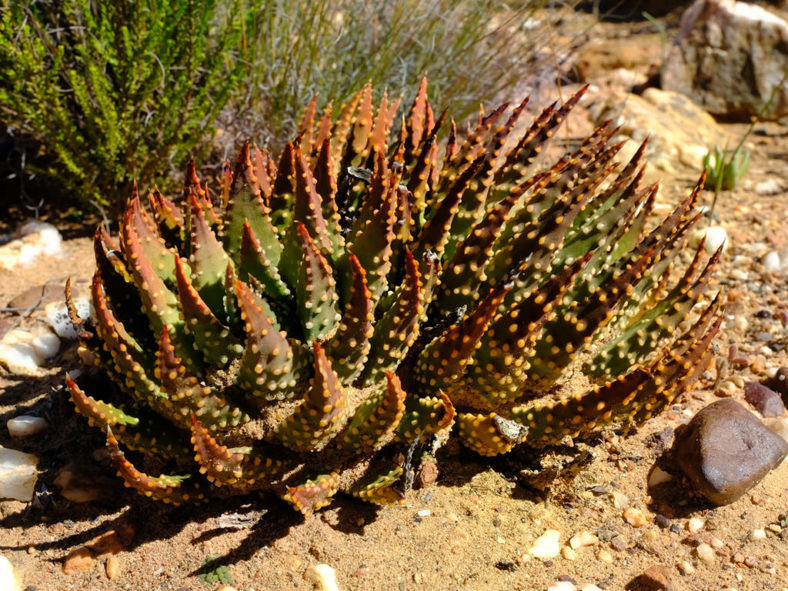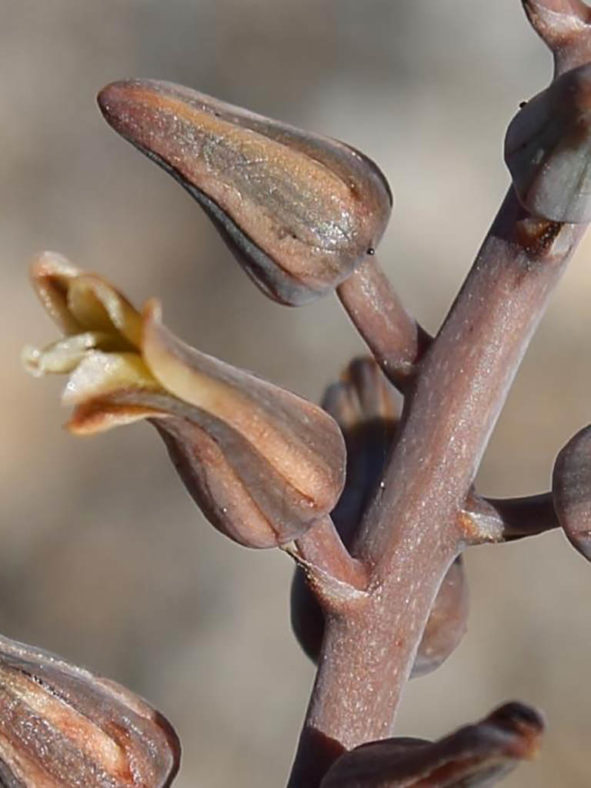Scientific Name
Tulista pumila (L.) G.D.Rowley
Common Name(s)
Pearl Plant, Miniature Aloe
Synonym(s)
Aloe arachnoides var. pumila, Aloe pumila, Haworthia margaritifera, Haworthia pumila, Tulista pumila var. pumila
Scientific Classification
Family: Asphodeloideae
Subfamily: Asphodeloideae
Tribe: Aloeae
Genus: Tulista
Etymology
The specific epithet "pumila (POO-mil-uh)" means "dwarf" and refers to the original description as Aloe pumila. It is the largest species of Tulista, but it is small for an Aloe.
Origin
Tulista pumila is native to South Africa. It occurs in a winter rainfall area of the Western Cape from Worcester-Robertson Karoo in the southwest to Laingsburg in the north.
Description
Tulista pumila, formerly known as Haworthia pumila, is a small, slow-growing succulent that forms rosettes of thick, fleshy, olive-green to dark brownish-green leaves covered with white tubercles. It is a slowly proliferous plant variable in leaf shape, color, growth form, and tubercles. The rosettes can reach up to 12 inches (30 cm) in height and 6 inches (15 cm) in diameter. The leaves are triangular-ovate to broadly lanceolate, upright, sometimes incurved, and can grow up to 5.6 inches (14 cm) long and 0.8 inches (2 cm) wide.
The flowers are greenish to brownish-white, waxy in texture, and appear on slender stalks that can grow up to 16 inches (40 cm) long in summer.

How to Grow and Care for Tulista pumila
Light: This succulent tolerates full sun, but it prefers semi-shaded positions. Any window in your home or office will likely be appropriate for T. pumila.
Soil: Use a commercial soil mix formulated for succulents or make your own.
Temperature: T. pumila likes warmer temperatures in summer but cool in winter. It can tolerate cold down to 30 °F (-1.1 °C). USDA Plant Hardiness Zones 10a to 11b, 30 to 50 °F (-1.1 to 10 °C).
Watering: In spring and fall, when the growth is most active, water T. pumila thoroughly, then wait until the top of the soil dries out before watering again. Water your plant less during the winter when its growth slows down significantly. When this plant is mostly dormant during the hottest summer months, water it just enough to keep the leaves from shriveling.
Fertilizing: T. pumila does not require much fertilizer. However, for optimum growth, fertilization is a good idea. Feed during the growing season with a weak fertilizer solution. Do not fertilize during the winter.
Repotting: When it begins to outgrow its pot, repot your T. pumila in a new shallow and slightly larger pot with fresh soil. The best time to repot is in the spring or early summer.
Propagation: This plant rarely offsets, so most propagation is by seeds. Spring is the best time to sow seeds.
Learn more at How to Grow and Care for Tulista.
Toxicity of Tulista pumila
T. pumila is considered non-toxic to humans and animals.
Varieties, Forms and Cultivars of Tulista pumila
- Tulista pumila var. sparsa
- Tulista pumila 'Donuts'
- Tulista pumila 'Emperor'
- Tulista pumila 'Tenshi no Namida'
- Tulista pumila 'Variegata'
Links
- Back to genus Tulista
- Succupedia: Browse succulents by Scientific Name, Common Name, Genus, Family, USDA Hardiness Zone, Origin, or cacti by Genus
Photo Gallery
Click on a photo to see a larger version.



